R .DAHAL’SPROSPEROLOGY (A System of Human Activity) Content Principles 1.First Principle 2. Second Principle Corollaries 1. First Corollary 2. Second Corollary 3. Third CorollaryPart II PRINCIPLES OF PROSPERITY ((The guiding principles))
home prosperity desire pricniples of prosperity prosperity in practice
1. First Principle of Prosperity
"Prosperity of a person is directly proportional to his time value."
2. Second Principle of Prosperity
"In competitive market, change in prosperity of one individual member changes prosperities, relative to that member, of all its members.
1.Definitions
While quantity of consumable resources available to a person within a unit time is personal time value, the entire consumable resources generated by human being in a unit time is human time value and equally divided portion of that human time value to each individual is average time value. Ratio of one individual time value with average time value is called prosperity of that individual in that society.
Human economic structures have multi layers, having different time value for similar skill or proficiency. Such layer or stratum of time value gives vertical or stratum prosperity. In addition, different proficiencies have different time values in the same stratum, creating lateral or proficiency prosperity.
If W denotes time value of an individual profession in a financial setup where a layer or stratum is denoted by superscript m and a proficiency by subscript n and where A denotes corresponding number of people of a proficiency in a stratum and superscript and subscript m’ and n’ denote respective average values in that stratum, then above definitions provide following conclusions.
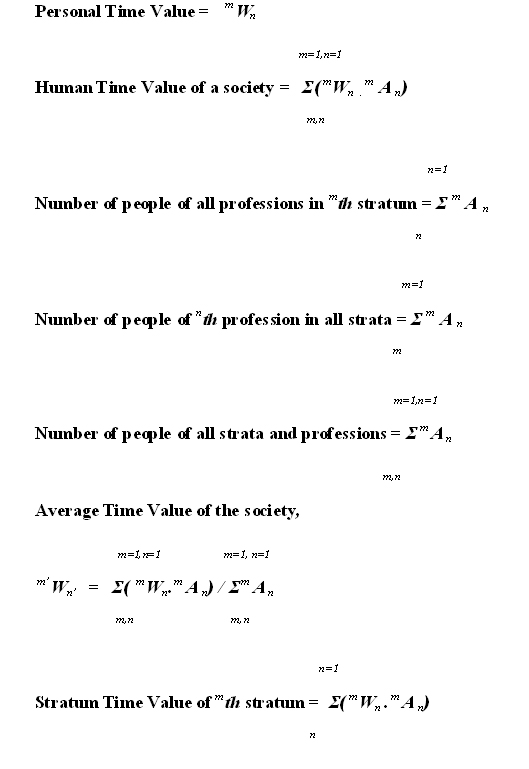
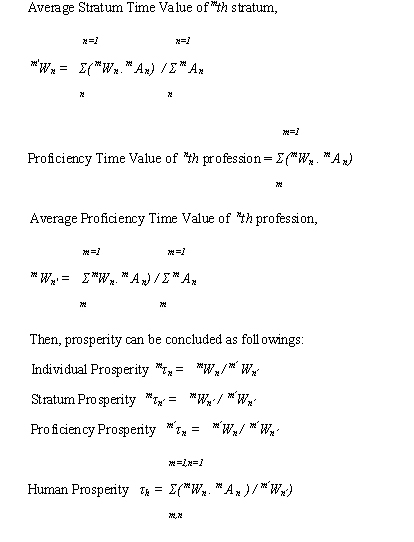
2. Corollaries
On the basis of Principles of Prosperity following corollaries can be drawn:
"Prosperity of a person is directly proportional to his professional prosperity with respect to base profession in his stratum and prosperity of his stratum with base stratum.
• "Prosperity is directly proportional to value of traded time input between producers."
• In a competitive production market least prosperous member cannot raise its prosperity without external interference.
First Corollary of Principles of Prosperity
Let us have n professions and m strata representing as subscripts and superscripts in time value. Then, we can create a table of following form.
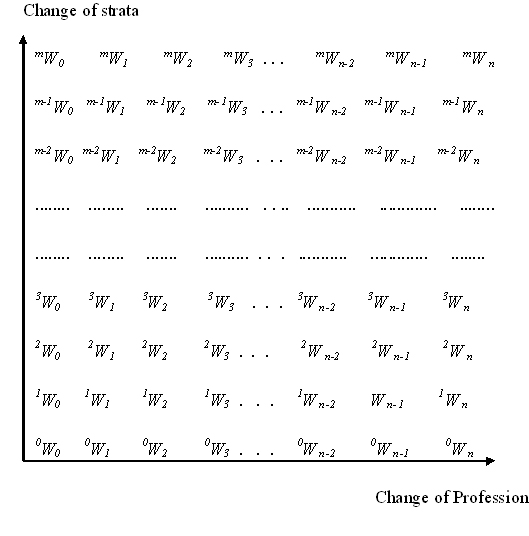
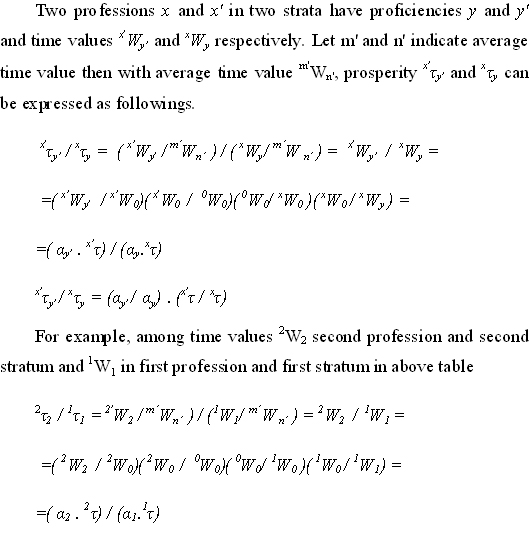
Thus, it can also be said First Corollary.
"Prosperities between two professions in two different strata are proportional to their professional prosperities in their respective stratum and prosperity of their strata themselves."
Or
"Prosperities between two prosperities in two different strata are proportional to their respective professional and stratum prosperities."
B. Second Corollary of Principles of Prosperity
Production cost C of any item in a unit time is a sum of human cost or time value W and non-human cost inputs M respectively in production process. Production by the same proficiency produces identical items. So the cost of production of similar products in two strata can be expressed as following.
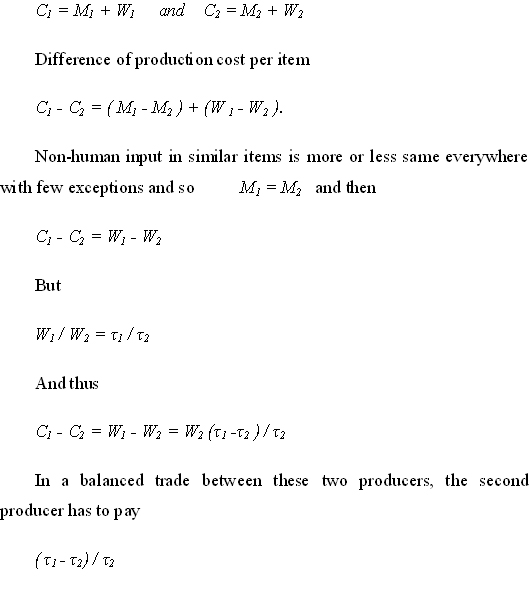
times more of its time value to the former for the same type of item and the former prospers in expense of later one.
Thus comes up Second Corollary of Principles of Prosperity.
"Prosperity difference is directly proportional to value of traded per item time value difference between producers."
C. Third Corollary of Principles of Prosperity

The prosperity of less prosperous economy will equal to that of more prosperous economy after n years (which may come never), if the growth is more than that of more prosperous one and if lesser one can maintain trade at its side.
Thus comes up Third Corollary of Principles of Prosperity.
"In a competitive production market least prosperous member can hardly raise its prosperity without external interference"